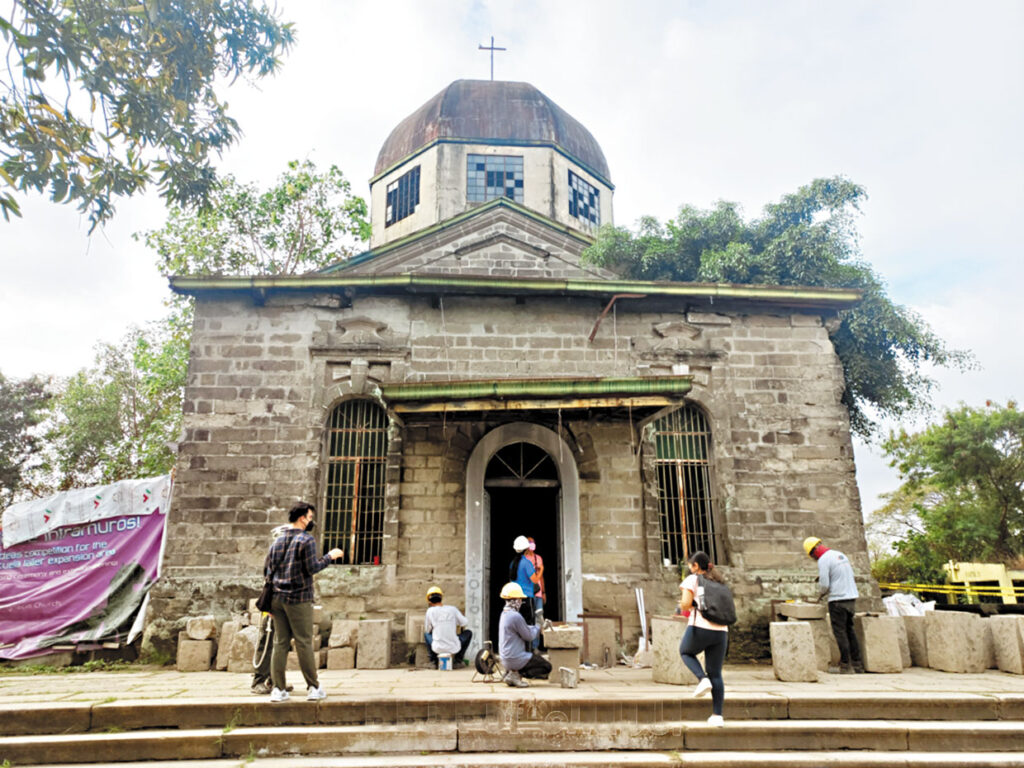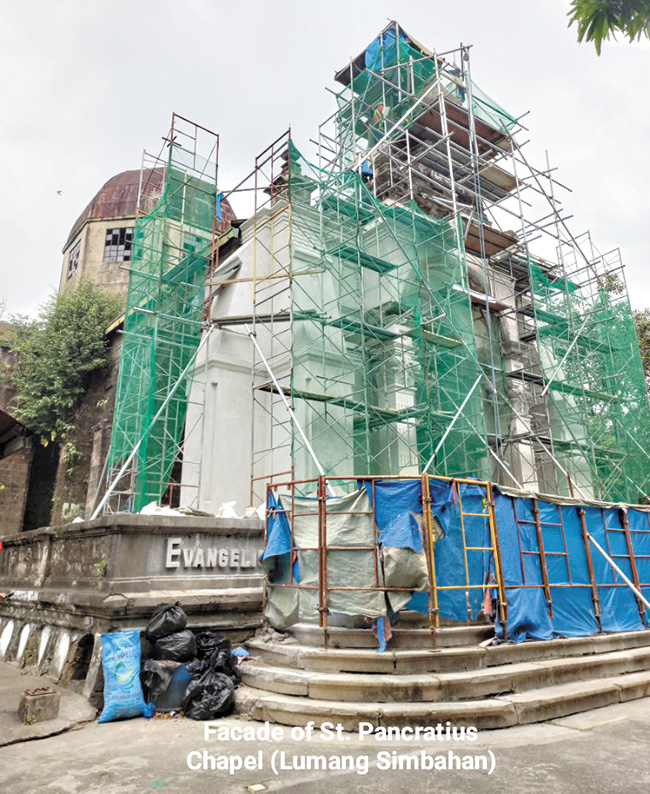On Feb. 14, 1986, I joined a throng of people who walked all the way from Baclaran Church to Ateneo de Manila in Loyola Heights, Quezon City, in a funeral procession to honor slain politician Evelio Javier. I did not know that 36 years later, I will be spending Valentine’s with the dead again. It’s as if Valentine’s Day has turned into the “Day of the Dead (Dia de Muertos),” the Mexican holiday.
This time, I was invited, together with other writers, by Philip Paraan of Escuela Taller to report on the ongoing restoration being done at the old St. Pancratius Chapel in La Loma Cemetery, one of the oldest active cemeteries in Manila, which was established in 1884.
At 54 hectares, it used to be bigger when the North Cemetery was part of it until La Loma became exclusively a Catholic cemetery. Religious congregations such as the Missionaries of Charity, Religious of the Virgin Mary, Augustinians, and Recollects have burial lots there.
In search of benedictines
While walking around the cemetery, I met fellow Bedan Bryan Balco. He was looking for the burial lots of the Benedictines, specifically that of Fr. Anscor Chupungco, OSB, who was the first and only Filipino rector-president of the Pontifical Liturgical Institute. He was also a co-founder, together with CICM fathers, of the Maryhill School of Theology and rector-president of San Beda University. We finally found it and paid our last respects.
Dignitaries
If the North Cemetery has important persons such as Presidents Sergio Osmena, Ramon Magsaysay, Manuel Roxas and celebrity Fernando Poe, Jr. buried there, La Loma has Felipe and Marcela Agoncillo, Cayetano Arellano, Vicente Lava, Pablo Ocampo, Tomas Mapua, and many others.
“Loma” means “hill” or “hillock” in Spanish. La Loma was historically and largely located in Caloocan. A portion of the southern part is in Sta. Cruz, Manila, and the lechonan area is in Quezon City.
Top 10 scariest places in Manila
St. Pancratius Chapel gained a certain repute when it was listed as one of the Top 10 Scariest Places in Manila. The late Carlos Celdran, who made the list, clarified that it may be scary, but not necessarily haunted. The fact that it is an old chapel in the middle of a cemetery surrounded by old mausoleums makes it unique. It was decommissioned with the construction of a modern parish with the same name near the entrance.

To differentiate it from the new chapel, the old St. Pancratius Chapel is called “Lumang Simbahan.” After it was decommissioned, it was used as a Cursillo house. Curiously, the chapel at Paco Park, which used to be a cemetery, is also called St. Pancratius.
St. Pancratius was a Roman citizen who converted to Christianity. He was beheaded when the Christians were persecuted. He was offered wealth and power by the emperor who was impressed with his determination, but St. Pancratius refused the offer. He is the patron saint of children, jobs and health.

National Cultural Treasure
Lumang Simbahan is more than a scary place. It has been declared a National Cultural Treasure in the same breadth as Sta. Ana and Sto. Domingo Churches. That is why in 2017, Bishop Pablo Virgilio David initially asked Escuela Taller to remove the invasive vegetation enveloping the chapel.
Bishop David, also known as Bishop Ambo, aside from being bishop of the Diocese of Kalookan, is also the president of Catholic Bishops Conference of the Philippines. After documentation and survey, the two parties drafted a Conservation Management Plan (CMP) for preventive maintenance. Restoration started in July last year with a time frame of eight months.
Killing them softly
As of now, the restorers are working on the facade. The rest of the chapel may take years to restore. It turns out that the removal of plant growths is not as simple as plucking them out. If the plants are removed abruptly, there is a tendency for them to grow again. So herbicides are applied and after a couple of weeks, the plants can be removed.
In case the roots have penetrated the interior of the adobe stone (volcanic tuff), they have no choice but to do the tedious job of removing the stones. Luckily, the penetrating vegetation has not reached the level like the jungle swallowing the temples in Angkor Wat, Cambodia. Fortunately, adobe is still available, mostly from Bulacan. Another compatible construction material, lime (apog), is also commercially available.
Details, earthquake, rains
Some details of the chapel have eroded and are hard to replicate even though they have references such as old photos. We were told that the most critical area was the right side of the chapel. With solid buttresses, the chapel has survived many earthquakes. The restorers are more concerned about torrential rains than earthquakes.
When they started restoration, the roof was already long span G.I. sheet. They also found a wooden angel, which they plan to recreate.
I didn’t see the Fu dogs (Chinese Ground Lions). Maybe they were covered but what I saw was the Latin sign “Beati mortui qui in domini moriuntur” which means “blessed are the dead who die in the grace of the Lord.”
It is, indeed, worthwhile restoring the chapel into a functional and accessible place of worship as envisioned by the Diocese of Kalookan.
During the Battle of Manila when a large part of Manila was devastated, La Loma was spared the bombings though there were reports that the Japanese used it for executions. With the collaboration of the Diocese of Kalookan and Escuela Taller, and the supervision of architect Foom Cobilla and site officer Nicole Losa, the trained artisanal workers of Escuela Taller would surely bring back life to this architectural wonder.
* * *
JP Ordoña (Manilakad) leads Manilakad Walks in Intramuros, Binondo, Quiapo, and more. In between, he writes, climbs, dives and more. Let him guide you to several walking destinations in Manila. Manilakad (JP Ordoña) can be reached on Facebook Messenger or through SMS at 0916-3597888.
